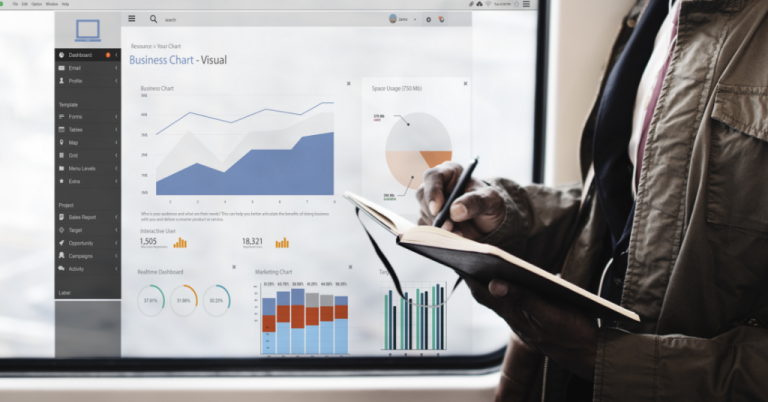Table of contents
1. Introduction: The Challenges of Managing Real Estate Portfolios
2. What is Business Intelligence (BI) and How Does it Work in Real Estate?
3. Benefits of Using BI in Real Estate Portfolio Management
4. Key Features of BI Tools for Real Estate Portfolio Management
5. Real-World Examples of BI in Real Estate Portfolio Management
6. Choosing the Right BI Tool for Your Real Estate Portfolio Management Needs
7. Conclusion: Leveraging BI for Improved Real Estate Portfolio Management
Real estate developers and investors have always been interested in finding the best locations to acquire properties and determining the right time to initiate development.
Portfolio holders must regularly evaluate their holdings and decide when to divest or capture value. However, being slow to identify subtle trends can result in missed opportunities, while being a first mover on a promising but inconspicuous opportunity can provide a significant advantage.
Unfortunately, it is difficult for developers and investors to become the first movers in such situations. Analyzing vast amounts of data using conventional methods and sources makes it challenging to draw clear conclusions and build robust business cases.
This is where advanced analytics and a data visualization tool can really help.
Advanced analytics can rapidly pinpoint areas of interest and evaluate the potential of specific properties with predictive modeling. This enables developers to quickly access hyperlocal community data along with land use data and market forecasts, allowing them to choose the most suitable neighborhoods and building types for development. Additionally, developers can optimize the timing of development, the mix of property uses, and the pricing segmentation to maximize the value of their projects.
Table of Contents
The Challenges of Managing Real Estate Portfolios
1. Data Management: Real estate companies must keep track of a variety of data points for each property, such as rent payments, lease terms, maintenance costs, and occupancy rates. Collecting, managing, and analyzing this data can be a time-consuming and complex process.
2. Market Volatility: The real estate market is notoriously volatile, and changes in market conditions can quickly impact the value of properties. Real estate companies need to stay on top of market trends, analyze data, and make informed decisions about buying, selling, or holding properties.
3. Portfolio Optimization: Real estate companies need to optimize their portfolios to maximize returns, minimize risks, and ensure a healthy balance between income-generating properties and growth opportunities. Achieving this balance can be a complex and ongoing process.
4. Risk Management: Real estate companies face a variety of risks, including market volatility, tenant turnover, and natural disasters. Managing these risks requires a proactive approach and the ability to quickly respond to unexpected events.
5. Resource Allocation: Managing a real estate portfolio requires a significant number of resources, including financial capital, staff, and time. Real estate companies need to allocate resources effectively to ensure that they are making the most of their investments and optimizing their portfolios.
These challenges highlight the need for real estate companies to leverage tools such as Business Intelligence (BI) to manage their portfolios more effectively. By using BI, real estate companies can gain insights into market trends, optimize portfolios, manage risks, and allocate resources more efficiently.
How Does Business Intelligence (BI) Work in Real Estate?
To consolidate a wealth of data for advanced analytics, machine learning algorithms can be used to facilitate the aggregation and interpretation of diverse data sources. Technology solutions automate data collection by accessing APIs and connecting various databases, which prepares the data for analysis. The true value lies not in the raw data but in the ability to extract patterns and forecasts that can be used to design new market-entry strategies.
For instance, if a developer seeks to identify undervalued but high-potential plots of land for development, traditional data sources like the Multiple Listing Service may not provide sufficient insights on future potential, as they were not designed for that purpose.
New and unconventional data sources are becoming more relevant. Resident surveys, mobile phone signal patterns, and Yelp reviews of local restaurants can help identify “hyperlocal” patterns, or granular trends at the city block level instead of just the city level. Additionally, macroeconomic and demographic indicators, such as a neighborhood’s crime rate or median age, can inform long-term market forecasts.
Many nontraditional variables can be linked to diverging, location-specific outcomes. For example, the number of permits issued to build swimming pools, changes in the number of coffee shops within a one-mile radius, building energy consumption relative to other structures in the same zip code, in-office mobility based on the frequency of elevator movement, and the tone of Yelp reviews for nearby businesses are just a few examples.
An example highlights the effectiveness of combining traditional and nontraditional data to predict the three-year rent per square foot for multifamily buildings in Seattle. This was achieved through the use of machine-learning models, which produced a high level of accuracy, exceeding 90 percent.
The results also demonstrated the value of incorporating nontraditional data sources, with variables such as proximity to highly-rated restaurants or changes in the number of nearby apparel stores accounting for up to 60 percent of the changes in rent, in contrast to traditional data sources such as vacancy rates.
Creating applications powered by advanced analytics offers scalability and versatility, allowing them to be used in a variety of scenarios. For instance, the same application that is used to forecast rents can be utilized to pressure-test expectations for individual properties within high-growth markets, helping to decide on which properties to invest in or places to divest.
Additionally, this application can be used to identify individual assets that will hold their value in otherwise declining markets and make capital expenditure decisions on specific properties such as calculating return on investments or stabilized yield on cost in unit upgrades. Another use case for such applications is comparing predictive-model outputs to the forecasts of traditional sources of market information like brokers.
Benefits of Using BI in Real Estate Portfolio Management
The benefits of using Business Intelligence (BI) tools for real estate portfolio management are numerous. Here are some of the key advantages:
1. Improved Decision-Making: By using BI tools to analyze data related to real estate portfolio performance, market trends, and tenant satisfaction, real estate companies can make data-driven decisions that are informed by quantitative analysis rather than guesswork.
2. Faster Access to Information: BI tools enable real estate professionals to access and analyze data in real time, rather than waiting for reports to be generated or for manual analysis to be completed. This allows for faster decision-making and more agile portfolio management.
3. Enhanced Risk Management: BI tools can be used to identify potential risks in real estate portfolios, such as properties that are underperforming or tenants who are likely to default on their leases. By identifying these risks early, real estate companies can take steps to mitigate them and minimize their impact on the portfolio.
4. Improved Portfolio Optimization: BI tools can be used to analyze data related to property performance and market trends, enabling real estate companies to optimize their portfolios for maximum returns. For example, BI tools can be used to identify properties that are likely to appreciate in value or to identify areas where rental demand is increasing.
5. Increased Transparency: BI tools enable real estate companies to provide stakeholders with real-time access to portfolio data, increasing transparency and accountability. This can be especially valuable for investors, who want to understand how their investments are performing and what steps are being taken to optimize returns.
6. Cost Savings: By optimizing real estate portfolios using BI tools, real estate companies can reduce costs and improve operational efficiency. For example, BI tools can be used to identify areas where energy costs can be reduced or to identify maintenance issues before they become more costly.
Key Features of BI Tools for Real Estate Portfolio Management
Business Intelligence (BI) tools are revolutionizing the way real estate professionals manage their portfolios. These powerful software solutions offer a wide range of features and functionalities to help organizations gather, analyze, and visualize data related to various aspects of the real estate industry. Here are some key features of BI tools for real estate portfolio management.
1. Property Portfolio Management: BI tools can provide a central repository for all property data, enabling real estate professionals to track and manage property performance metrics, such as vacancy rates, leasing activity, and rental income. This can help to identify underperforming properties, optimize leasing strategies, and maximize ROI.
2. Risk Management: BI tools can be used to identify and mitigate risks associated with real estate investments, such as changes in market conditions, tenant defaults, or regulatory compliance issues. This can help real estate professionals proactively manage risk and avoid potential losses.
3. Market Analysis: BI tools can gather and analyze market data, such as property prices, rental rates, and occupancy rates, enabling real estate professionals to make informed decisions about property acquisitions, sales, and leasing. This can help to optimize real estate investments and improve overall portfolio performance.
4. Tenant Analysis: BI tools can provide insights into tenant behavior and preferences, such as leasing patterns, renewal rates, and satisfaction scores. This can help real estate professionals to optimize leasing strategies, improve tenant retention, and maximize rental income.
5. Financial Analysis: BI tools can provide a detailed analysis of financial data, such as cash flows, expenses, and net operating income. This can help real estate professionals to track financial performance metrics, identify areas for improvement, and optimize portfolio returns.
6. Customization: BI tools can be customized to meet the specific needs of real estate companies, such as integrating with existing systems, adding new data sources, or developing custom dashboards and reports. This can provide flexibility and scalability to support changing business requirements.
Overall, these features enable real estate professionals to gain deeper insights into portfolio performance, optimize real estate investments, and make data-driven decisions to achieve better outcomes for their stakeholders.
Real-World Examples of BI in Real Estate Portfolio Management
Real-world examples of BI in real estate portfolio management demonstrate how organizations are using these tools to gain deeper insights, optimize portfolio performance, and make data-driven decisions. Here are some specific examples:
1. Predictive Analytics for Property Valuation: Prologis, a global logistics real estate company, used BI tools to develop a predictive model for property valuation.
2. Portfolio Performance Analysis: JLL, a commercial real estate services company, used BI tools to create a dashboard that provided real-time portfolio performance analysis.
3. Tenant Retention Analysis: RealPage, a property management software company, offers BI tools to analyze tenant retention data and identify factors that contributed to tenant turnover.
4. Risk Management: Blackstone, a real estate investment firm, has used BI tools to monitor market trends and identify potential risks.
5. Lease Analysis: CBRE, a real estate brokerage, and advisory firm, has used BI tools to analyze lease data and identify trends in leasing activity.
Choosing the Right BI Tool for Your Real Estate Portfolio Management Needs
When selecting a BI tool for real estate portfolio management, it’s important to choose one that aligns with your organization’s specific needs and goals. Here are some considerations to keep in mind when evaluating BI tools:
1. Scalability: Consider whether the tool can scale to accommodate your growing data needs. As your real estate portfolio expands, you’ll need a tool that can handle increasing volumes of data and users.
2. Integration with Existing Tools: Look for a BI tool that can easily integrate with your existing data sources and platforms, such as property management software, financial systems, and market data sources. This will enable you to consolidate all of your data into a single source of truth for more accurate and comprehensive analysis.
3. Customization: Choose a BI tool that allows for the customization of reports and dashboards to meet the specific needs of your organization. This will help you to present data in a way that is easily digestible and meaningful to stakeholders.
4. Machine Learning Capabilities: Look for a BI tool that incorporates machine learning capabilities, such as predictive analytics and anomaly detection. These features can help you to identify trends and outliers in your data and make more informed investment decisions.
5. User-Friendliness: Choose a BI tool that is user-friendly and intuitive to use. This will help to ensure that all stakeholders, from technical to non-technical users, can easily interact with the tool and get value from it.
6. Security and Compliance: Look for a BI tool that has robust security and compliance features. This includes features such as data encryption, role-based access controls, and secure data transmission.
7. Customer Support: Consider the level of customer support offered by the BI tool vendor. Choose a vendor that has a track record of providing excellent customer service and support, as this can be critical to the success of your BI implementation.
8. Mobile Accessibility: With the increasing popularity of mobile devices, it’s important to choose a BI tool that can be accessed from smartphones and tablets. This will enable you to stay up-to-date on your real estate portfolio data even when you’re on the go.
9. Visualization Options: Look for a BI tool that offers a variety of data visualization options, such as charts, graphs, and maps. This will allow you to present your data in a way that is both informative and visually appealing.
10. Data Governance: Choose a BI tool that has robust data governance features, such as data lineage and data quality checks. This will help to ensure that your data is accurate and reliable, which is critical for making informed decisions.
11. Cost: Of course, the cost is an important consideration when choosing a BI tool. Be sure to evaluate the total cost of ownership, including licensing fees, implementation costs, and ongoing maintenance and support costs, to ensure that the tool fits within your budget.
12. Industry-Specific Features: Finally, look for a BI tool that offers industry-specific features and functionality tailored to the real estate industry. For example, some tools may offer features for lease management, property valuation, or market analysis.
Real Estate Analytics – Making it Happen
Although advanced analytics cannot be considered a crystal ball, it can be a powerful tool to support investment hypotheses, challenge conventional intuition, and identify critical factors in classic real estate problems. However, incorporating advanced analytics into a portfolio can be a complex process, involving time-consuming data collection, costly data scrubbing, and significant challenges in hiring experts with diverse skill sets. Nevertheless, real estate firms cannot ignore the potential of advanced analytics to provide unprecedented granularity in identifying future risks and opportunities.
To stay ahead, companies should consider employing analytics to execute critical strategic imperatives, prioritize data-cleansing efforts based on the most valuable use cases, and establish clear processes for data governance, interpretation, and decision-making. In building teams to harness the power of advanced analytics, the most effective organizations combine a variety of experts, including scientists, engineers, and translators who can bridge technical expertise with strategic business goals or actions. Companies that fail to act now risk adapting too late as solutions in artificial intelligence continue to evolve at a rapid pace.













